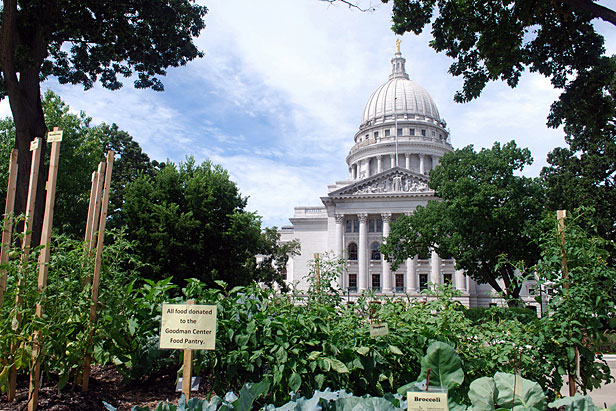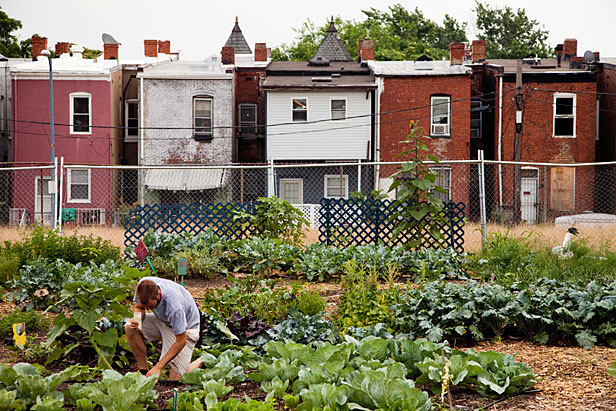From mid-May through July, Grist readers followed along as a writer, photographer, filmmaker, and farmer hit the highway to visit a couple dozen urban farms across America. The Breaking Through Concrete team are back to sum up their trip and share some of Michael Hanson’s most indelible images from it for our Feeding the City series.
Months before we actually left Seattle in our grease-powered short bus, Edwin Marty, cofounder of Jones Valley Urban Farm in Birmingham, Ala., and I, a Seattle-based writer, had proposed a book idea. We wanted to tell the stories of the American urban farm — documenting the best, often under-publicized examples of people and organizations growing food and providing services to their communities by way of the city farm plot.
We put together a list of 15 farms from Seattle to New Orleans to Detroit. A publisher bit: University of California Press. Uh oh. As often happens with big ideas, when they actually become real, things get scary.
 The Breaking Through Concrete traveling team (l-r): Michael Hanson, Charlie Hoxie, David Hanson, and Louis Louis, the short bus.Photographer Michael Hanson is very good at shooting people and landscapes, and he happens to be my brother and housemate. So I asked him to come along — two months on the road total, with two days at each farm location. We’d have to go bare-bones, as we have often have on our collaborative projects. He agreed, as usual. A few weeks later I remembered our friend Charlie, whom we’d met in Ethiopia during a project in 2009. He was in his first year of graduate-level documentary film school at NYU. I asked if he’d join us as videographer. He agreed.
The Breaking Through Concrete traveling team (l-r): Michael Hanson, Charlie Hoxie, David Hanson, and Louis Louis, the short bus.Photographer Michael Hanson is very good at shooting people and landscapes, and he happens to be my brother and housemate. So I asked him to come along — two months on the road total, with two days at each farm location. We’d have to go bare-bones, as we have often have on our collaborative projects. He agreed, as usual. A few weeks later I remembered our friend Charlie, whom we’d met in Ethiopia during a project in 2009. He was in his first year of graduate-level documentary film school at NYU. I asked if he’d join us as videographer. He agreed.
Finally, though we had the book deal, we needed more funding for the trip. Edwin had recently met Brooke Smith of WhyHunger at a food-security conference. WhyHunger is a New York-based nonprofit supporting efforts to cure hunger around the world. Brooke was looking for new-media ways to tell the story of “food deserts” – urban areas with little or no access to fresh food — and grassroots community solutions. WhyHunger became the core sponsor of the Breaking Through Concrete tour.
Road-tripping in my car, a 1987 faded-sky-blue Subaru wagon, would not be sexy. So, while traveling for work in Chile and Bolivia during March, I spent many coins at Internet cafés in order to scan Craigslist for vegetable-grease-powered vehicles that could sleep three grown men and provide desk space for editing while traveling interstates. A 1997 Chevy short schoolbus, converted to the Frybrid vegetable oil fuel system and remodeled to sleep three plus kitchen, appeared. It was located in my neighborhood of Ballard, Seattle. Five days after my return flight from Bolivia, I was the proud owner/operator of a Blue Bird school bus/RV eventually christened Lewis Lewis.
We hit the road May 19, south on Interstate 5. We had breakdowns, cheap fixes, and expensive fixes, and met really nice mechanics. We slept beside Highway 1 overlooking Pacific rollers, beside urban farms, in parking lots of real-estate offices, and in the truck side of rest areas. We were woken by a mall cop named Mike Jordan who told us to leave the 24-Hour Fitness lot, and the lead singer and guitarist from a Clarksdale, Miss. blues band came aboard between sets.
In Birmingham, Al., in mid-June, in the middle of the tour, Lewis Lewis was unresponsive, parked by the curb of a residential street. A curious neighbor came to investigate, in slippers. He read the white sticky letters we’d used to spell www.breakingthroughconcrete.com on Lewis’s back windshield. We explained the project. He looked confused.
“But, where are you breaking the concrete? Do you remove it completely?”
To clarify, we do not do demo work. The project is a celebration of the visionaries who are transforming our ideas of food and doing so within the confines of the urban environment.
We couldn’t revive Lewis in time, so we left him at Edwin’s farm and rented a shiny white Limited Edition Chrysler minivan with automatic sliding doors and air-conditioning. It made us weak in the knees, but we loaded her up, named her Barbara, and continued on our way, north toward D.C., Brooklyn, Philly, Detroit, and Chicago.
Hybrid models
The American urban-farm movement is seeing its biggest resurgence since its heyday during World War II, when Victory Gardens provided food for a rationed market, offered work, and educated children about agriculture. They’re a shining example of what we as a country can grow in small spaces if pushed to the brink.
But today’s urban farm projects go a step further. In a postmodern symbiosis, they offer new ideals of social innovation with a return to traditional farming practices, and — gasp! — a preference for old-fashioned capitalism. Today’s urban farmers want to grow honest food, and they want to provide social services and new opportunities for underserved populations. But they also have the savvy entrepreneurial spirit that might actually propel this movement beyond the feel-good corner farm into a business model that has the staying power to reshape our food systems.
Next: Images from the trip
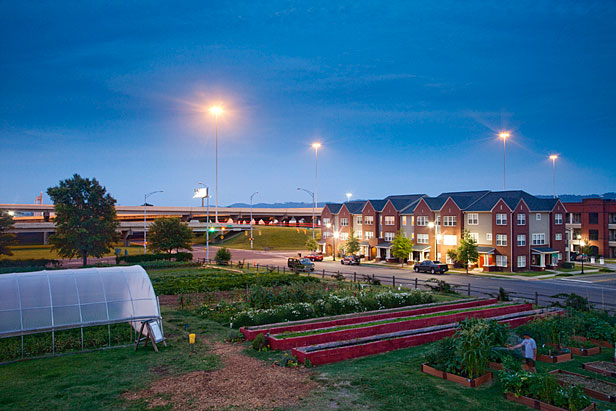 (Michael Hanson)
(Michael Hanson)
Jones Valley Urban Farm, Birmingham, Alabama
Dusk falls on Jones Valley Urban Farm, a farm and educational project that occupies a full city block in the heart of downtown Birmingham.
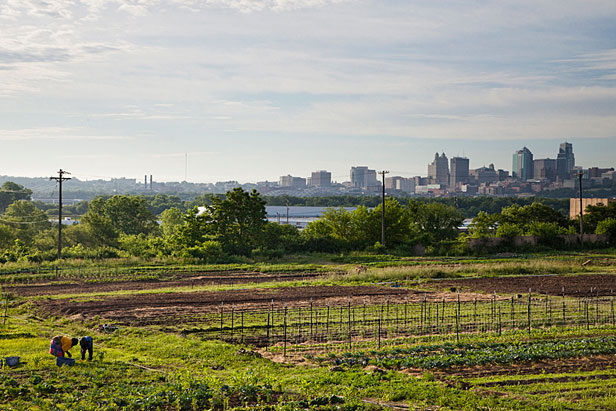 (Michael Hanson)
(Michael Hanson)
Roots for Refugees Farm, Kansas City, Kansas
As the sun rises above Kansas City, two employees harvest vegetables at this diverse farm.
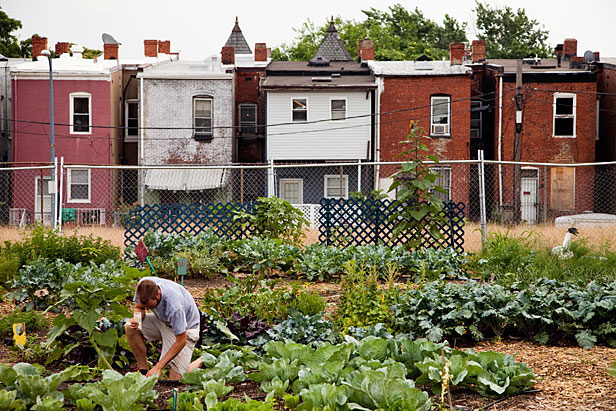 (Michael Hanson)
(Michael Hanson)
Common Good City Farm, Washington, D.C.
Spencer Ellsworth harvests vegetables at this farm in a low-income neighborhood in Washington, D.C.
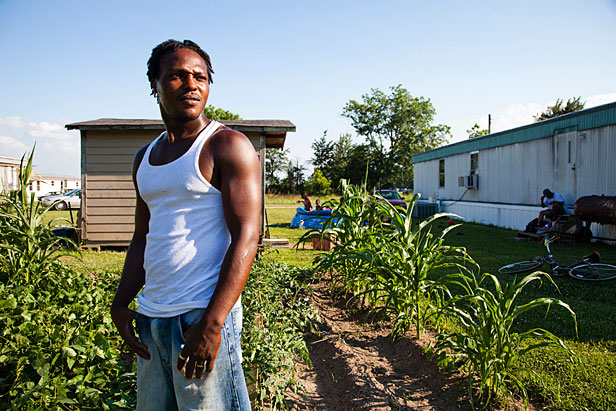 (Michael Hanson)
(Michael Hanson)
Shelby, Mississippi
A young man stands in front of his small garden plot next to his trailer home. He’s been growing corn, tomatoes, arugula, and beans in his backyard for many years.
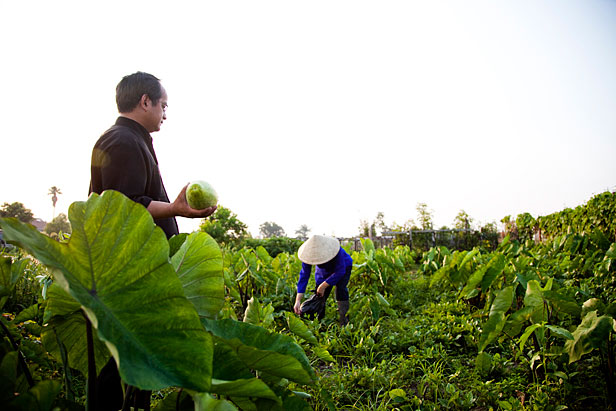 (Michael Hanson)
(Michael Hanson)
Village de l’Est, New Orleans, Louisiana
Hurricane Katrina wrecked Village de l’Est in 2005, but this community’s ability to grow food in their own backyards and community spaces made recovery rapid. Father Luke holds produce as an older woman continues to harvest her plot.
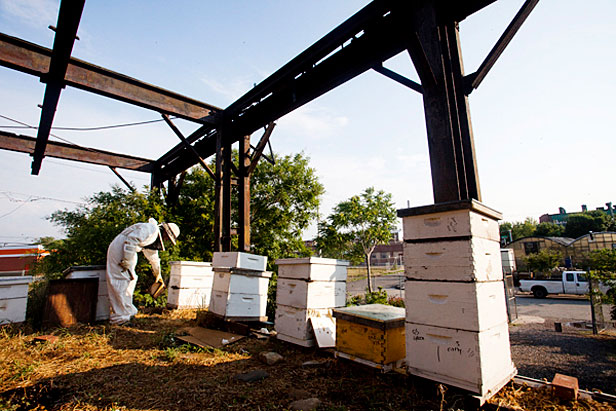 (Michael Hanson)
(Michael Hanson)
Greensgrow, Philadelphia, Pennsylvania
Mary Seton Corboy, director of Greensgrow, an urban farm and nursery in Philadelphia, smokes the boxes before inspecting the bees.
 (Michael Hanson)
(Michael Hanson)
Fairview Gardens, Santa Barbara, California
An employee holds a bed of plants while another picks strawberries. More than 100 years old, Fairview wasn’t always an urban farm. Years of sprawl crept in, and what was once a rural farm is now the only working production farm in the Goleta Valley outside Santa Barbara. A handful of families have lived on the property for decades, working the fields and enjoying the urban oasis.
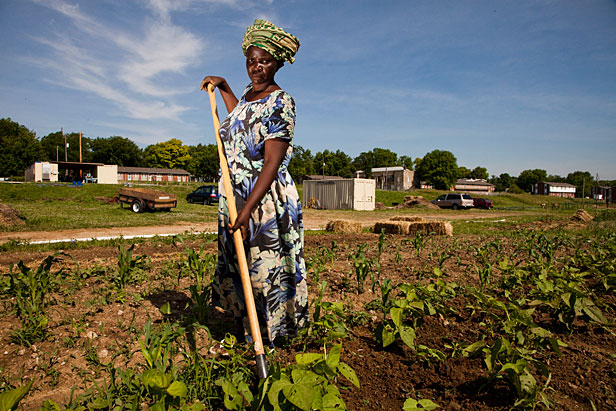 (Michael Hanson)
(Michael Hanson)
Roots for Refugees Farm, Kansas City, Kansas
A refugee from Burundi tends to her individual plot on a sunny afternoon.
 (Michael Hanson)
(Michael Hanson)
Catherine Ferguson Academy, Detroit, Michigan
At the Catherine Ferguson Academy in Detroit, teenage mothers get their education in the classroom and outside at this urban produce and livestock farm. Here, students learn to build a small greenhouse.
